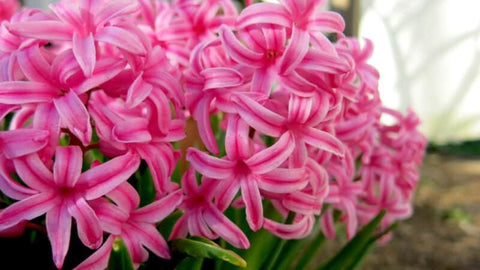As the crisp breeze of autumn sweeps through your garden and the leaves start to don their vibrant fall colors, it's a picturesque time of year. However, it's also a season when unwelcome guests may decide to make your garden their home. Pests, seeking shelter and sustenance as temperatures drop, can quickly turn your fall paradise into a battleground. In this comprehensive guide, we'll explore effective pest management strategies to help you keep these intruders at bay during the fall season and ensure your garden remains a tranquil and thriving space.The following content also has some reference value for raised garden beds.
Understanding Fall Pests
Before we dive into pest management, let's identify some of the common pests that tend to make their presence known in the fall:
Rodents
As the weather cools down, rodents like mice and rats actively seek warmth and food. Your garden shed, garage, or even your home might look appealing to them, and they can cause significant damage and spread diseases.
Insects
Various insects, including ants, stink bugs, and ladybugs, search for refuge indoors as the temperatures drop. While these insects might not be harmful, their presence indoors can be a nuisance.
Fall Webworms
These caterpillars create unsightly webs in trees and shrubs, where they feed on leaves. Their presence can lead to defoliation and affect the aesthetic appeal of your garden.
Spiders
Spiders, often harmless but unsettling to some, tend to move indoors during the fall, seeking shelter from the cooling outdoor temperatures.

Integrated Pest Management (IPM)
Integrated Pest Management (IPM) is an environmentally friendly approach to pest control that emphasizes prevention and the use of the least harmful methods to manage pests. It combines various techniques to keep pests in check while minimizing the use of pesticides. Here's how you can implement IPM in your fall pest management plan:
1. Inspect and Identify Pests
The first step in effective pest management is identifying the pests you're dealing with. Different pests require different control methods, so knowing what you're up against is crucial.
2. Remove Pest Habitats
Pests need suitable habitats to thrive. By eliminating or reducing these hiding spots and nesting areas, you can discourage pest infestations. This might involve cleaning up debris, sealing cracks and crevices, and trimming overgrown vegetation.
3. Maintain Garden Hygiene
Regularly clean your garden by removing dead or decaying plant material. These can attract pests looking for shelter or breeding grounds.
4. Implement Barriers
Create physical barriers to keep pests out. For rodents, seal any entry points around your home and consider using screens on doors and windows to prevent insect intrusion.
5. Encourage Natural Predators
Welcome natural predators like birds, bats, and beneficial insects into your garden. They can help keep pest populations in check by feeding on them.
6. Utilize Traps and Monitoring
Use traps and monitoring techniques to identify and capture pests. This can include pheromone traps for insects or humane live traps for rodents.
7. Choose Pesticides Wisely
If necessary, opt for low-impact pesticides that specifically target the pests you're dealing with. Always follow the manufacturer's instructions, and use pesticides as a last resort.
Fall Garden Pest Management
Now, let's delve into specific strategies for managing pests in your fall garden:
Pest-Resistant Plants
When planning your fall garden, opt for plant varieties that are less appealing to pests. Marigolds, chrysanthemums, and lavender are known for their pest-repelling properties.
Neem Oil
Neem oil is a natural pesticide that can deter a variety of pests. Dilute it according to the instructions and apply it to affected plants.
Beneficial Nematodes
Beneficial nematodes are microscopic organisms that prey on soil-dwelling pests like grubs and root-damaging insects. Apply them to your garden soil to control these pests.

Companion Planting
Implement companion planting by placing certain plants together to deter pests. For example, planting garlic and onions alongside your vegetables can help repel aphids and other pests.
Row Covers
Use row covers to physically block pests from reaching your crops. These covers allow sunlight and water to penetrate while keeping insects away.
Regular Inspection
Regularly inspect your plants for signs of infestation. Early detection allows you to take action before the problem escalates.
Pruning and Cleanup
Remove and dispose of affected plant parts to prevent the spread of diseases and pests. Prune trees and shrubs to improve air circulation and reduce hiding spots for pests.
Pest Management Indoors and Around the Home
While it's crucial to protect your garden from pests, don't forget to address the potential intruders inside your home. Here are some tips for indoor pest management:
Seal Entry Points
Inspect your home for any openings, cracks, or gaps that pests might use to get in. Seal these entry points with caulk or weatherstripping.
Proper Storage
Store food items in airtight containers to prevent access by rodents and insects. Make sure to promptly clean up any crumbs or spills that might attract pests.
Regular Cleaning
Maintain a clean and clutter-free home. Regular cleaning helps eliminate hiding spots for pests and makes it easier to spot any unwanted visitors.
Humane Traps
If you encounter pests indoors, consider using humane traps to capture and release them outside. This approach allows you to remove pests without causing harm.

Professional Assistance
If your pest infestation is severe or persistent, don't hesitate to seek professional pest control services. They can assess the situation and implement effective measures to resolve it.
Conclusion: A Pest-Free Fall Garden
As you enjoy the beauty of your garden during the enchanting fall season, remember that with the right strategies and diligence, you can maintain a pest-free haven. By practicing integrated pest management, choosing pest-resistant plants, and employing natural and low-impact solutions, you can keep unwanted guests at bay. Whether you're tending to your garden or ensuring your home remains pest-free, a proactive approach will help you savor the splendors of autumn without the hassle of uninvited visitors.









